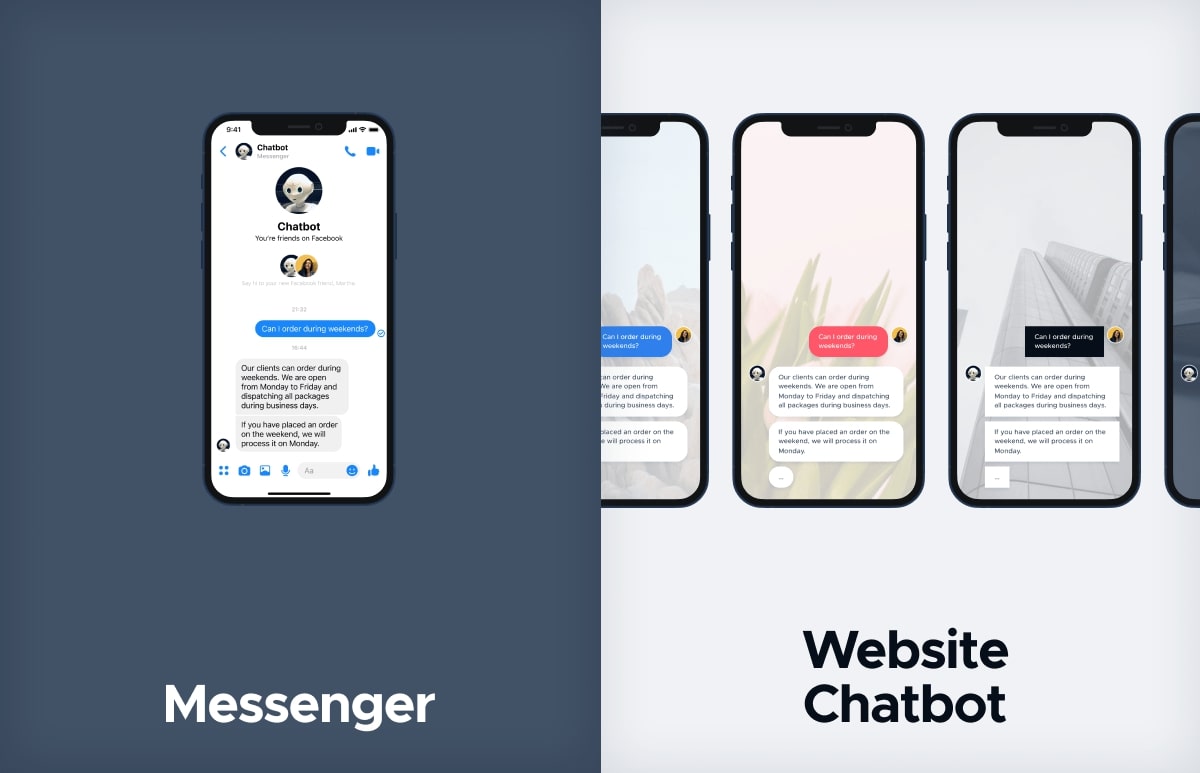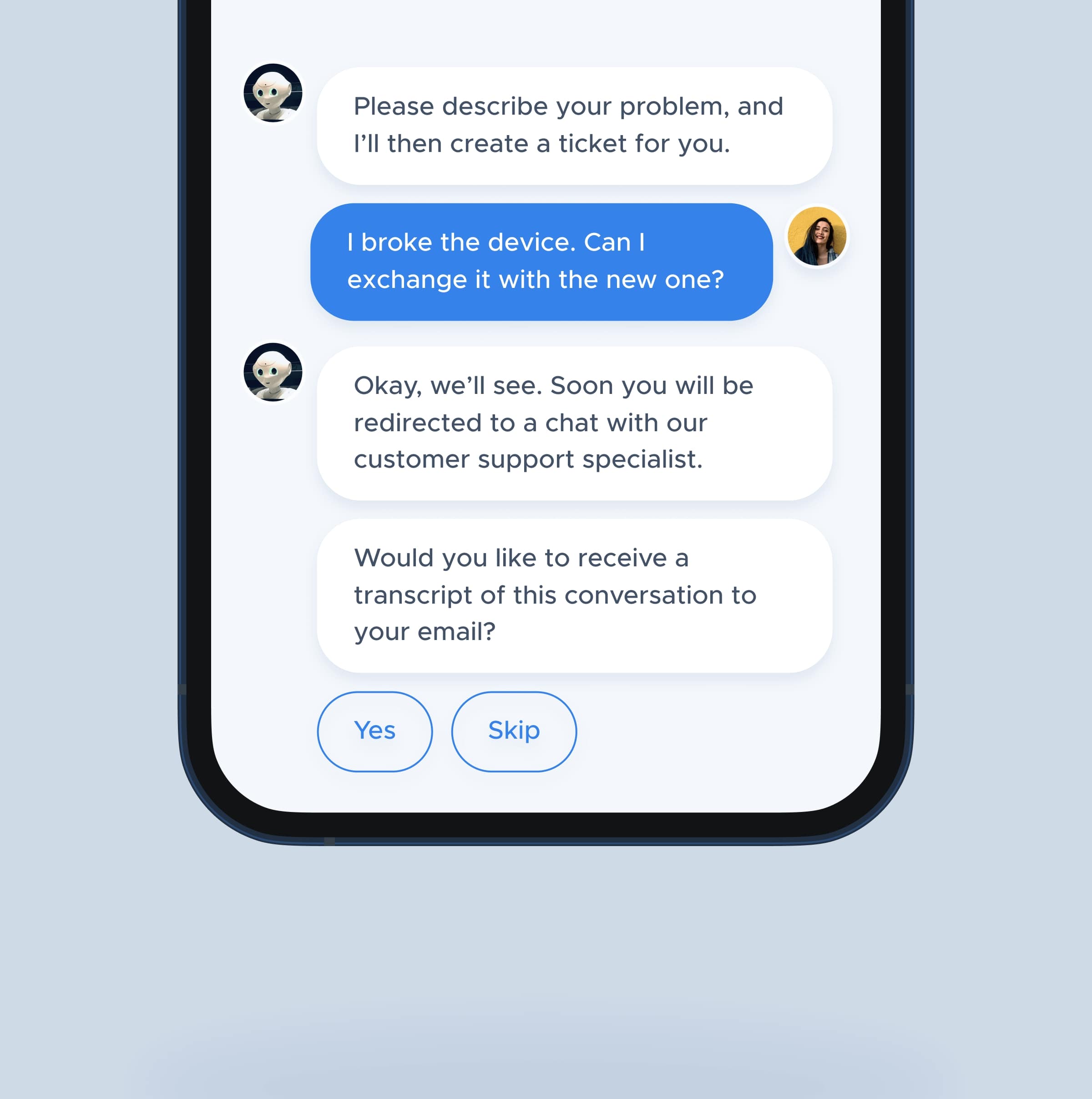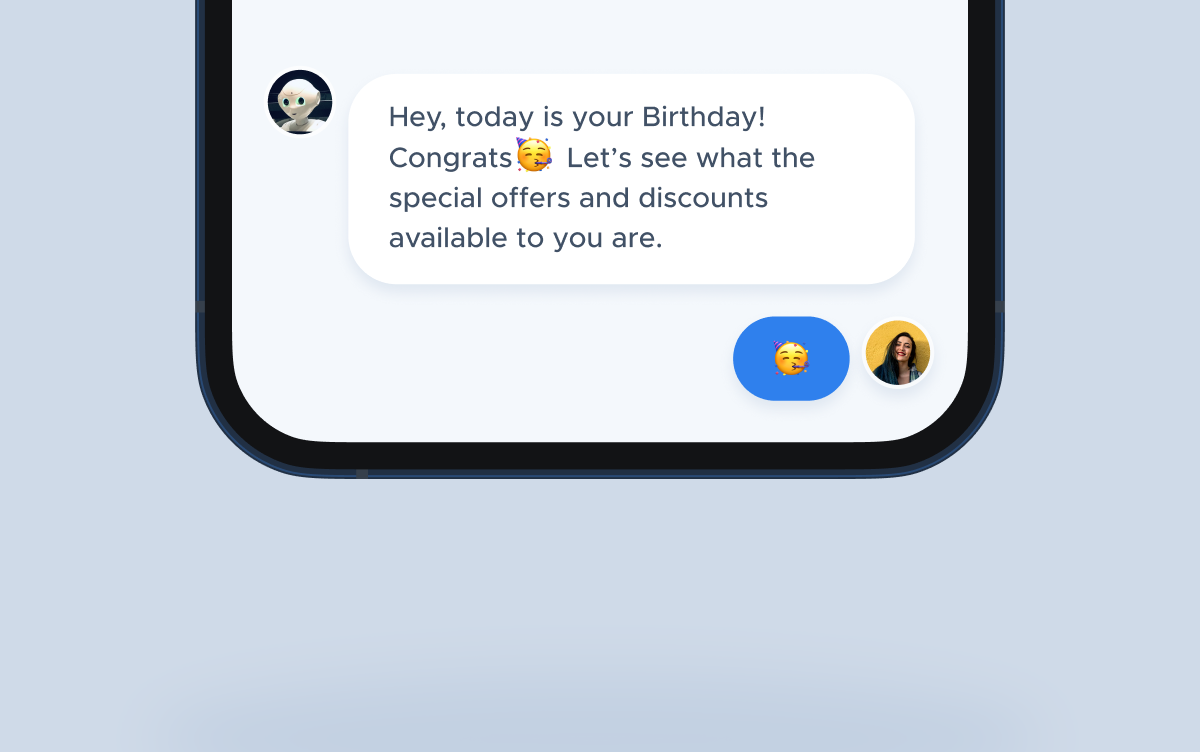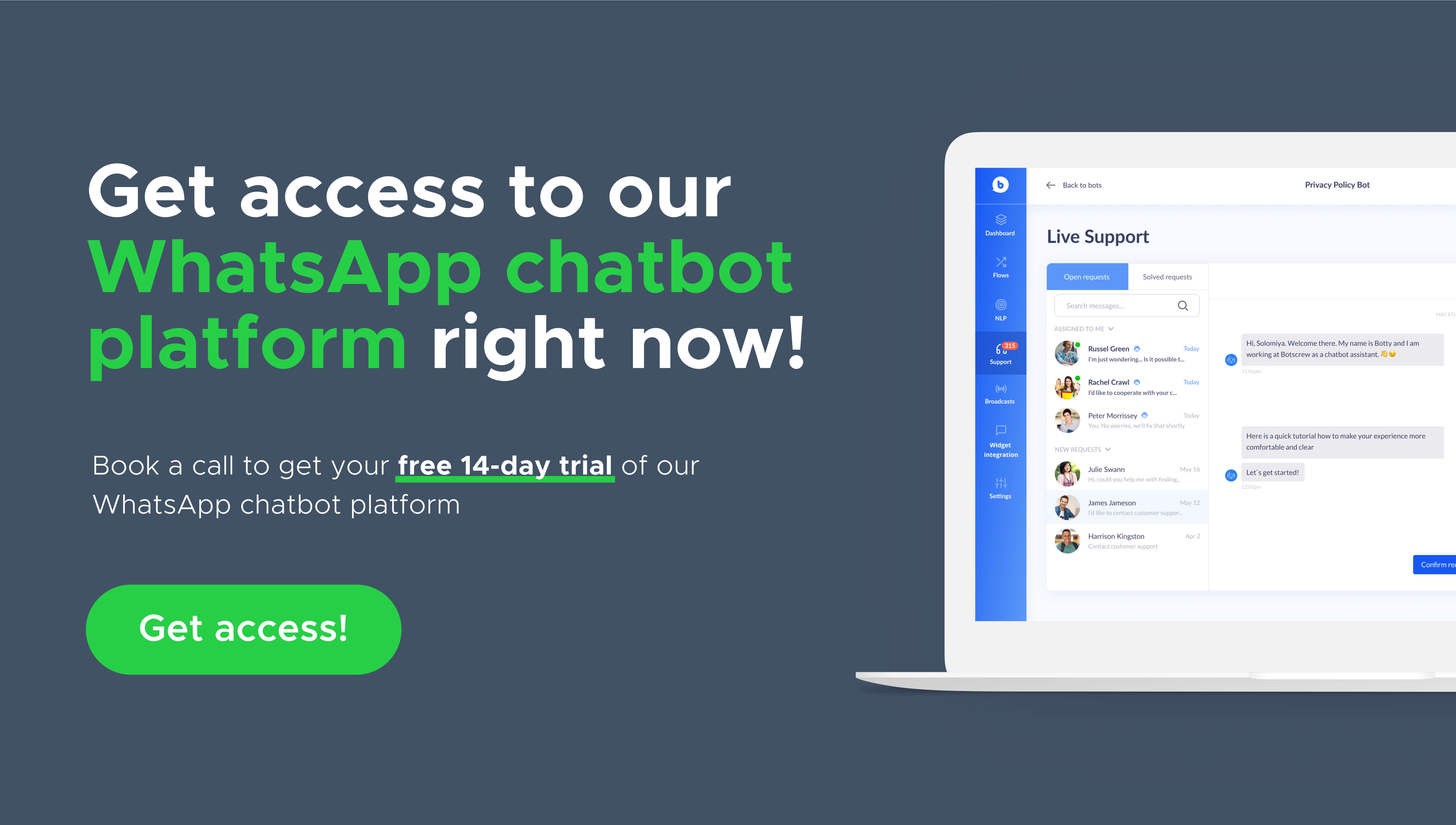Support, Lead & Engage: How to Make a Chatbot for a Website
Imagine you are doing a Google search. You found a website on services or products you were craving for. You opened it, started reading all the headers, descriptions, and…
After 5 minutes, you still can't get where their pricing is.
First thought?
Why is it so confusing?
Maybe you’ll continue your Internet surfing, maybe you even find the pricing and buy a product from that website. However, the feeling of irritation and disappointment will stay.
And for some people it will be a reason for Exit.
It takes about 50 milliseconds (that’s 0.05 seconds) for users to form an opinion about your website that determines whether they like your site or not, whether they’ll stay or leave.
Chatbots play an important role in this decision. Even more, if implemented right, they can turn your website visitors into leads, then into customers, and eventually into brand ambassadors.
In our article, we will explore the topic of conversational marketing, how to make sure you are getting 100% out of your website chatbot, what possible use cases are, how to better engage visitors, and where to put chatbots except the Welcome page.
P.S if you don't have a website yet, and are looking for a website builder, check out this article from QuickSprout.
How can you use chatbots to boost your website performance?
Most customers (56%) expect to find what they’re looking for from a company in 3 clicks or less (Salesforce). Evenmore, they (72%) expect a deep understanding of their needs, reflected through personalized experiences (Salesforce).
One of the tools which achieves both requests is conversational marketing.
Conversational Marketing is helping companies bridge the gap from the physical to the digital world and create personal relationships at scale. As more brick and mortar retailers move their business online, Chat, SMS and chatbots are empowering marketers to deliver a curated experience that people thought could only exist via face to face engagement. Sara Varni, CMO
Briefly, it is a method of engaging with website visitors and converting leads via dialogue-driven activities. This style of inbound marketing puts a focus on interactions with the consumer, not simply one-way transmission by the brand.
Conversational marketing helps building trust, and one example of it are chatbots, specifically, website chatbots.
Unlike chatbots in Messenger, Viber or other social media that have different limitations, chatbots on websites can do completely everything you want.
Besides there are different integration you can have with a chatbot:
– CRM software ( e.g., Hubspot, Zoho, Salesforce, etc.),
– Calendar (Google Calendar, etc.)
– Payment systems (e.g., Stripe, PayPal, etc.),
– Maps (Google Maps, Apple Maps, etc.)
– Cloud storage tools (e.g., Dropbox, Google Drive, OneDrive, etc.),
– any other business software that your company is using.
Another advantage is better user experience because you can change fonts, widget colors, shape of buttons, etc. that will align with your brand.

With all these possibilities there are several use cases for website chatbots in support, lead generation and engagement.
SUPPORT CASES
Upgrade subscription
Makes changes to orders
Pre-sales support
Post-sales support
Cancel orders
Converse visitors outside business hours
Guide customers to the right operator group
Create support tickets
Track packages
Answer payment queries
Answer frequent questions

83% of consumers said they would be more loyal to a brand who offers a chatbot for tasks like making an appointment or handling customer service inquiries (Mobile Marketer).
LEAD GENERATION CASES
Book appointments and reservations
Convert visitors to sign-ups
Nurture leads
Onboard new visitors
Help with opening a website account

47% of consumers would be open to making a purchase completely from a chatbot (HubSpot).
ENGAGEMENT CASES
Promote content offers, blog posts
Collect Surveys and Feedback
Drive website registrations
Communicate offers

…and more.
After deciding what exactly a chatbot will do, the next crucial step is finding a place where it should (and better) be. The Welcome page is not always the best choice. Actually, if it’s well-designed, you don’t require any additional help there.
Well-designed chatbots on websites can be helpful to customers and drive greater conversion metrics than websites without bots. If the bot is just lead capture, I find them annoying, and I’m a huge bot lover. In the future, bots will understand the content being displayed on the page and enhance users' experience.
Jared Jaskot, Legal AI and Chatbot Maker, founder of YoTengoBot
The only case when you need a chatbot, is to capture attention with a highly personalised trigger or a clear call to action you find the most relevant for your customers, like:


Don’t be focused on starting a conversation with anyone, instead focus more on starting conversations with the right people.
In general, a chatbot is needed for more complex processes, where confusion might arise, when visitors hesitate about what their next step should be, or where you constantly see a high bounce rate.
Like here:
Demo signups and other sales-related pages
Event pages
Complex landing pages
Free tools
Product and feature pages related to product information/ features
Pricing pages
Contact us page
These are pages where additional questions could be, and a chatbot might, for example, help visitors decide which plan makes the most sense for them based on their budget and goals.
Ask what their problem is, and advise an article or free guide they can download.
Simplify complex forms so visitors won't drop off.
And don’t forget about your sales team or the inbound strategy, so a chatbot can:
Qualify users by asking a sequence of questions.
Schedule a call with qualified leads directly in a chat.
Push lead scoring data to CRM.
Mistakes with the website chatbots
The first misconception is assuming that every visitor wants to chat, so a chatbot pops up, and steals their attention instead of identifying the user’s needs, and then narrowing their focus to specific things.
“Businesses should strive to deliver the right message, at the right time, to the right person, with the right information, on the right channel, every single time.” Brian Bagdasariana
This leads to the second misconception, that a chatbot is a magic tool that actually drives new traffic to your site. As a result, you completely forget about your funnels, or pay less attention to important marketing practices, like:
SEO
Branding
Partnerships
Paid media
Email nurture campaigns
Marketing operations.
And even worse – you add a chatbot with no strategy or goals to the website, and instead of reducing confusion, it only creates more.
For example, overcomplicated chatbot personas or making a chatbot too engaging. Especially when it has to be less friction, like filling out simple forms with questions about their name, email address, company name and so on.
Don’t confuse visitors, always have a proper onboarding to introduce the chatbot’s functionality at the starting of the conversation. And mention that, yes, this is a chatbot, but a visitor still has the option to contact a human agent.
Look at the difference between the chatbot messages. Which brings more value and understating for a user?


While having a chatbot was just a cool thing to do before, chatbot fatigue has certainly set in amongst end users. It is now critical that chatbots are built to achieve a specific purpose. Customers are no longer satisfied talking in endless loops with a chatbot; they want to see value. Stefan Katz, Senior Consultant at Deloitte
Alright, now the next crucial question is how to make a chatbot for a website?
If your budget is lower than 500$, you should consider a basic chatbot building platforms like Drift, Chatfuel, Manychat, Tidio, etc. However, if you want a complex chatbot with AI or custom development, check out our article on chatbot development companies.
And, don’t forget, a website chatbot is not a sales folk. It isn't going out of the website and bringing you new traffic.
A good website chatbot is the one who helps decide visitors whether to buy a product or leave contacts, sign up or book a consultation.
Whether they’ll stay or leave.
When your chatbot works well, it expands your hours of availability; it enables you to speak simultaneously with thousands of customers; it enables you to create specific flows to specific kinds of users; it makes for a more friendly, personalized and engaging way of communication. Just visualize how much more leads you will be able to generate this way. When the biggest tech companies in the world put their best foot forward on conversational AI – you should join the stream.
Eran Soroka, Head of Marketing Operations at CoCoHub









